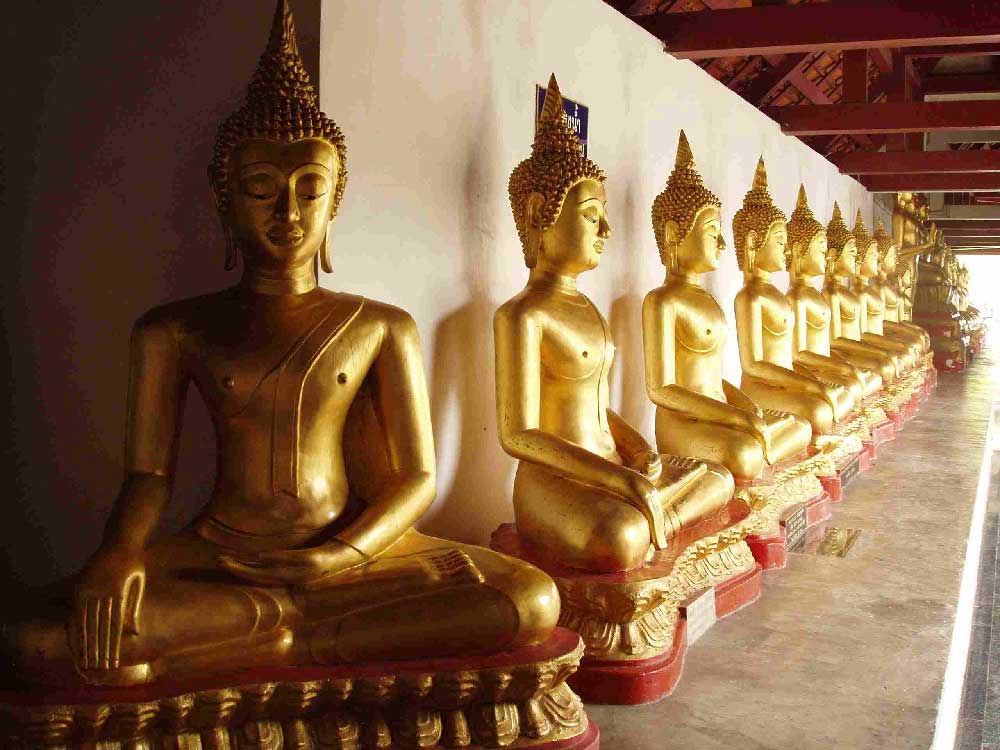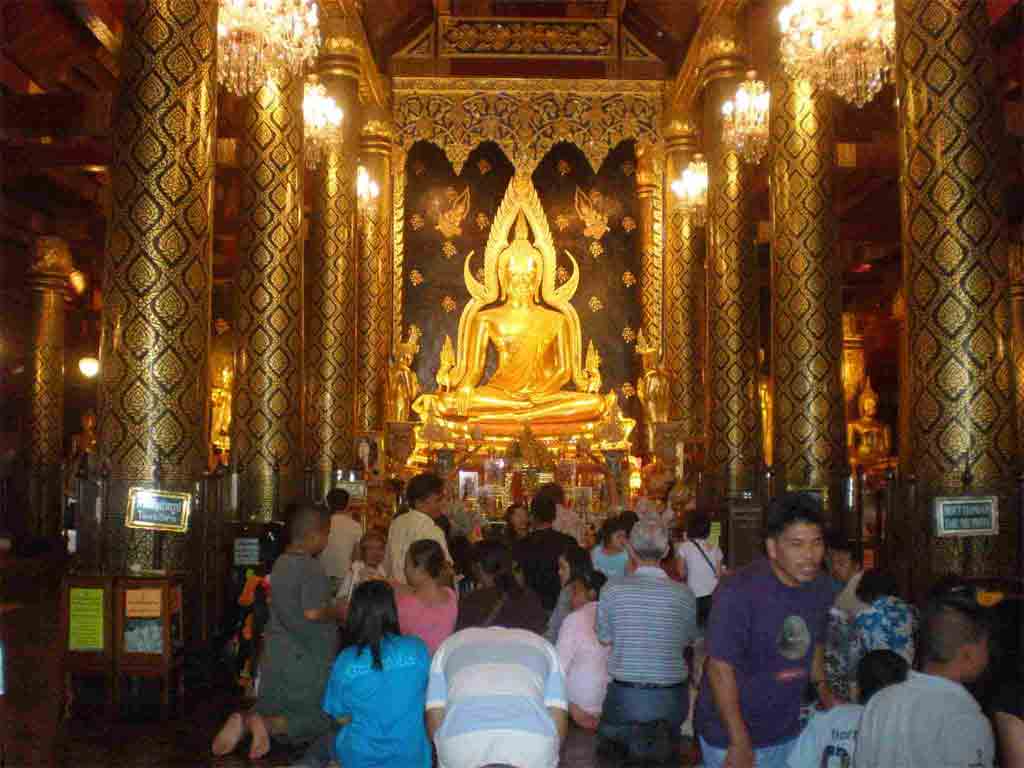WAT ARUN
Experience a sunrise from the Fhra Buddha Yodfa Bridge and the city's best fresh produce market, Phak Khlong Talad; after breakfast visit a flower market; take a ferry across the river to see Wat Arun then return to Wat Po for a wander and a Thai massage.
Take a taxi to the foot of the bridge; from there walk the rest of this itinerary, taking the canal boats across the river at the relevant times.
WAT ARUN
Sunrise over the city skyline and the river is best experienced at the Phra Buddha Yodfa Bridge (Memorial Bridge). The sun rises about 6.30am, a good half hour before the traffic begins to thicken. Tell the taxi driver to let you off at the foot of the bridge. Climb the stairs and walk to the middle of the new span for a view downstream; then climb to the old span for a view of Wat Arun and the boats upstream. You may see a few early morning fishermen casting lines from the parapet. Walk down the stairs and upstream to Phak Khlong Talad, one of Bangkok's very best fresh markets (open 24 hours a day). This is the receiving point for fresh flowers, fruit and vegetables brought by long boat from Thonburi's market gardens and destined for the kitchens of Bangkok's hotels and homes. Wander around to see the wide variety of tropical produce on sale. To leave, walk straight along the road on which you entered the market until you reach an entrance on the right leading into a covered market. From the door, you can see a shrine at the far end with a statue of Rama I, Bangkok's founder.
Walk past the market, the fabric shops and various general shops until you reach busy Chakkaphet Road. Turn right past a goldsmith's shop and cross at the second junction to a watch shop. In front of it is a one-table pavement coffee shop. Ignore the dust and order Thai coffee, a strong brew of coffee and chicory beans, and some patongkoh, delicious Chinese breakfast pastries. It's a memorable way to start the day.
Afterwards, cross Chakkaphet Road to the flower sellers whose roses, orchids and other blooms fill the pavements. On a sunny morning, there are few prettier sights anywhere in the city. Buy a puang malai (small flower garland) and carry it with you. A few sniffs from time to time will act as a restorative as you walk through the pall of exhaust smoke towards the boat dock and river-taxi stop called Tha Tien.
Cross back to the coffee shop and turn right up Chakkaphet. When it crosses a canal it becomes Maharat Road and begins to curve to the right. Follow this to the junction with a street that runs between the Grand Palace and Wat Po. (The sign on the opposite side says 'Soi Thai Wang'.) Turn left and walk to the Tha Tien boat landing. Board one of the frequent squarish red boats that go to Wat Arun (daily 7am-5pm). In 1997, the temple and surrounding grounds underwent substantial renovation.
WAT PO
WAT PO
WAT PO
Temple of Dawn
During the Ayutthaya period, Wat Arun, or the Temple of Dawn, had a 15-m (50-ft) spire. It was restored by Rama II, III and IV, the height of its central tower being raised to its present 104m (341ft), making it one of the tallest religious structures in the country. The bases of the four upper staircases have niches with statues depicting the four important events in the Buddha's life. Climb the eastern staircase for a grand view of the city and of the four prang (spires) that mark the corners of the courtyard. The tiny god on his white horse is Phra Pai, god of the wind. Look closely at one of the prang and you will notice that the flowers are fashioned from porcelain shards and seashells.
Recross the river by boat, walk to the main street, turn right at the next junction, then turn left and walk to the entrance of Wat Po (daily 8am-5pm). Wat Po predates the birth of Bangkok by a century. Restored many times, it is one of Bangkok's most eclectic temples and well worth a visit.
Of special interest is the 45-m (147-ft) long, gilded Reclining Buddha in the northwest corner. Inspect its feet with the 108 signs, or laksana, by which a Buddha can be recognised, rendered in intricate mother-of-pearl patterns. In the courtyard are statues of various rusi (ascetics) demonstrating body exercises. (Wat Po is highly regarded as a centre of traditional medicine.)
Do not miss the hot (ordination hall) to the right of the entrance with its marvellous mother-of-pearl doors and its sandstone bas-relief panels depicting scenes from the Ramakien. On the eastern side of the courtyard is the School of Traditional Massage. For a few hundred baht you get an hour's massage that will soothe travel-weary muscles. Thai masseurs dig in a little deeper, but enduring their efforts will result in a truly relaxed body. You may be hungry by now, so consider heading back to the Tha Tien boat landing for noodles.


















